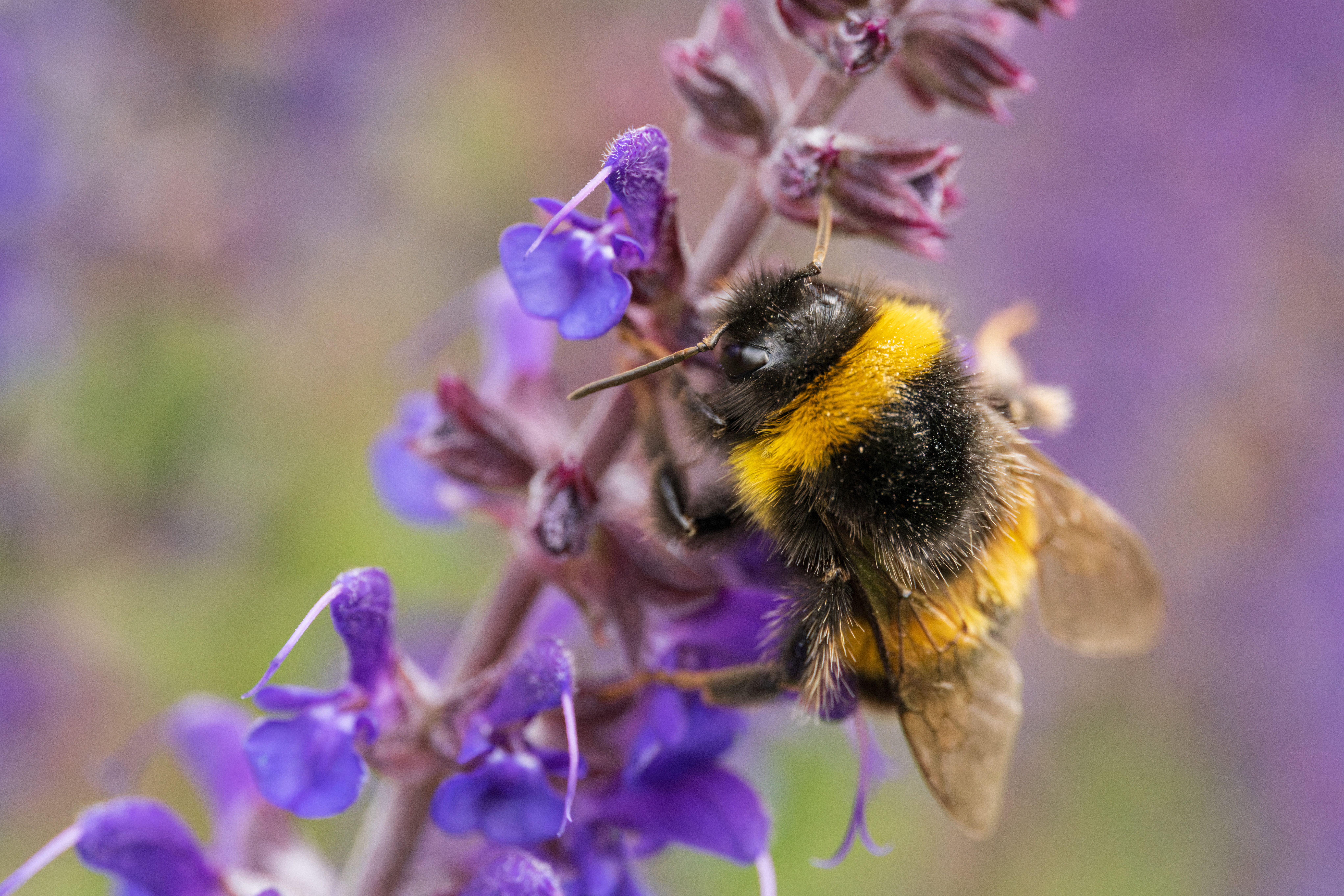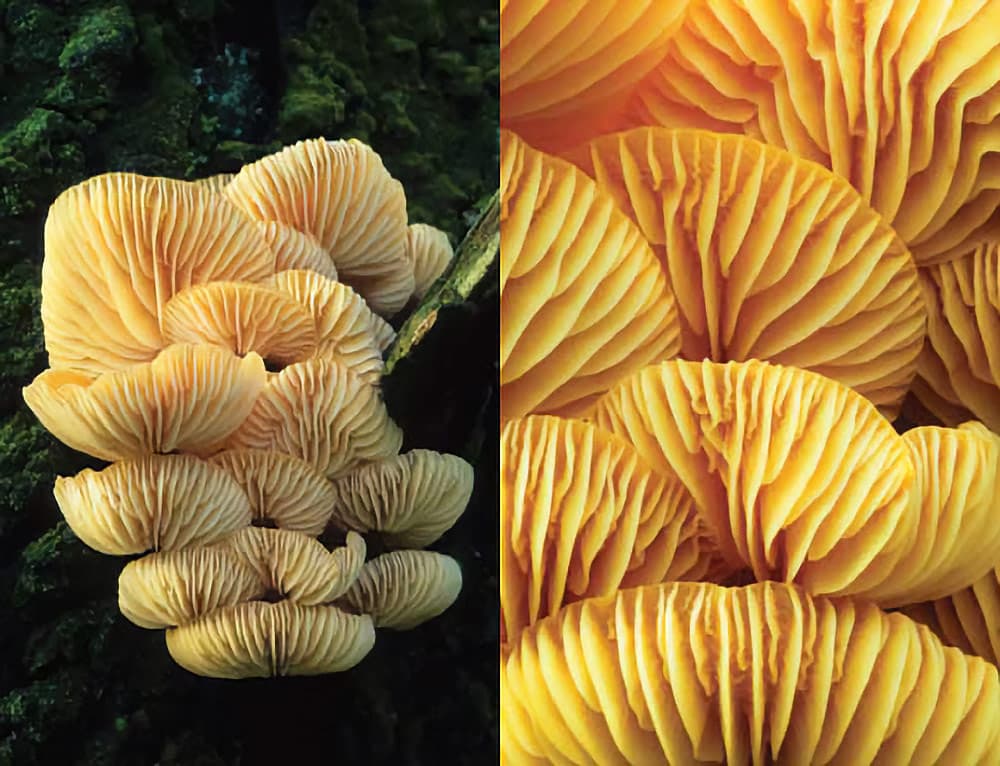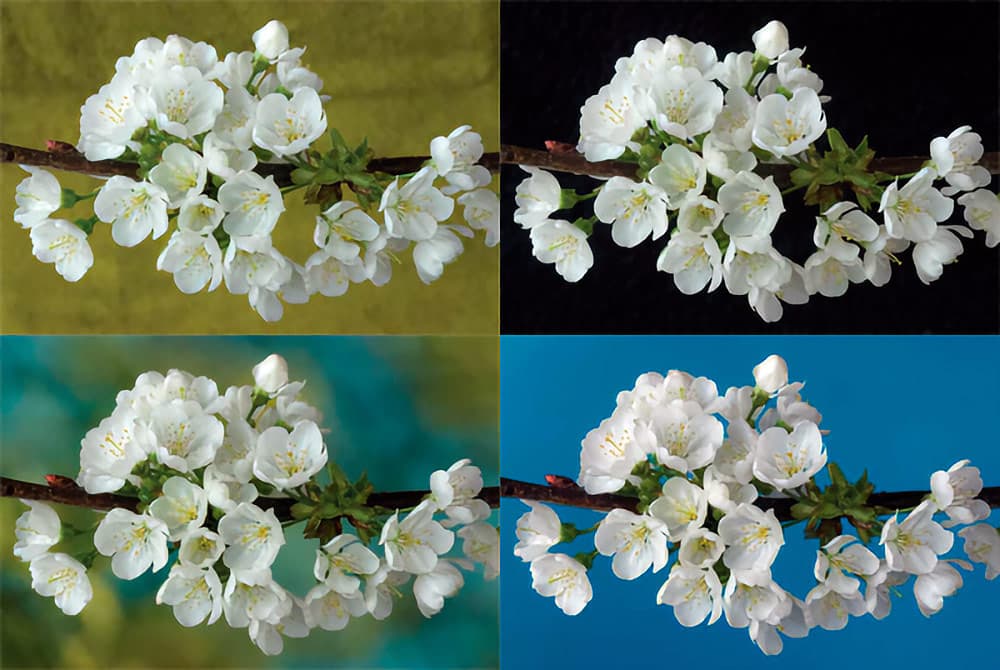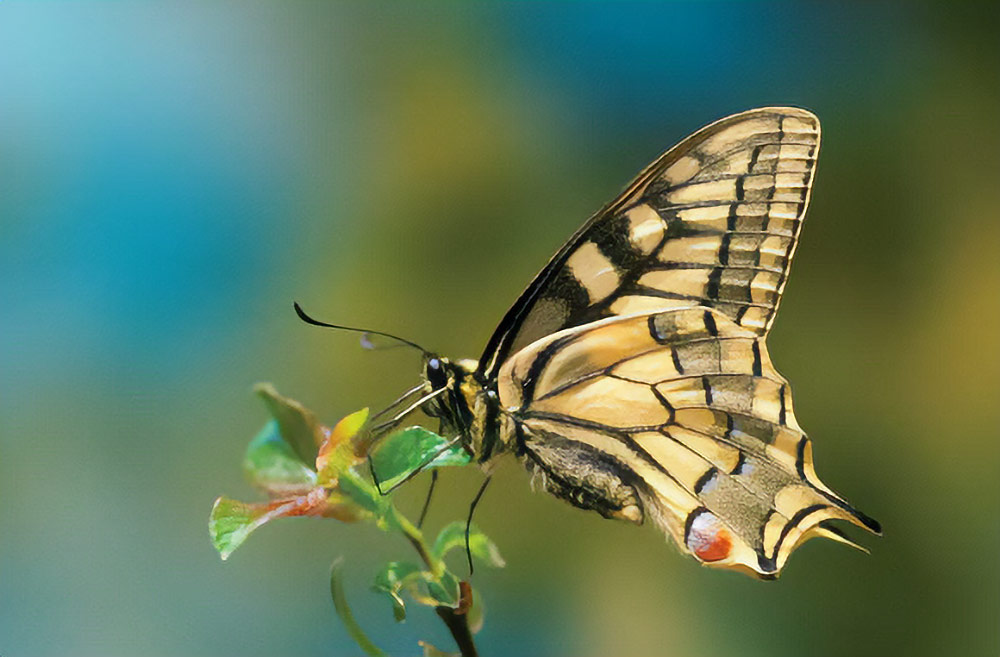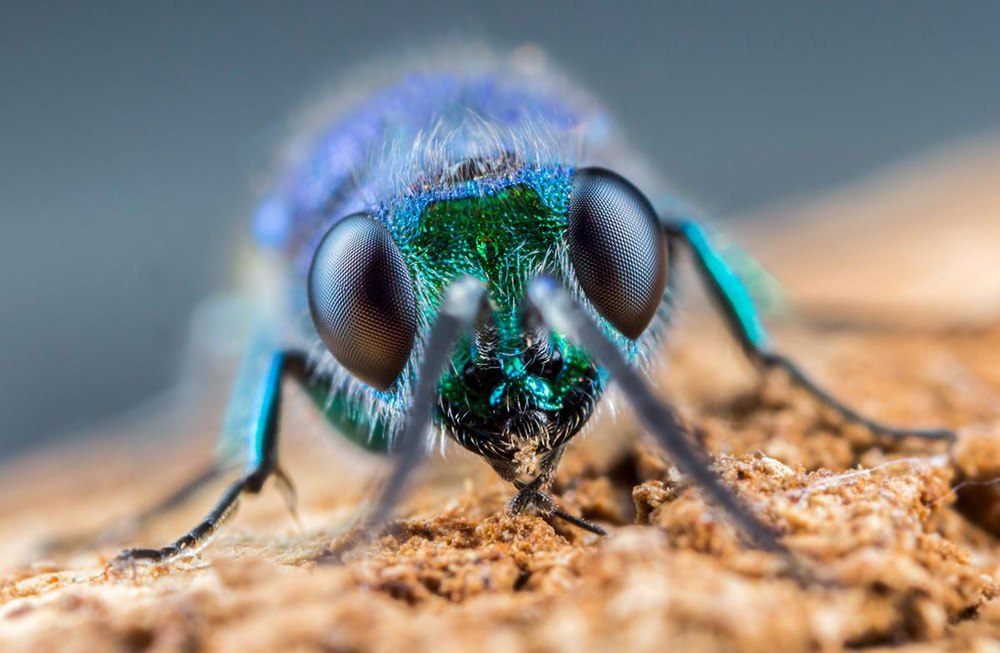Macro photography brings us close to objects where we discover amazing details in the environment – from where we can see and produce unique, creative photographs. It may seem challenging at first, but macro photography really isn’t so different from other genres once you get a grasp of the basics. With these top tips, you’ll be shooting great macro images in no time.
To get started with macro photography all you need is your smartphone, and if you want to take your extreme close-ups to the next level a mirrorless or DSLR camera with a dedicated macro lens will be the way to go.
What is macro photography?
The term ‘macro’, as we know it means “large”, but is meant by lens manufacturers to describe lenses that enlarge, magnify. Most of them label their lenses so – but Nikon, just to be different name theirs ‘Micro’ or MC.
Macro photography is extreme close-up photography, using a 1:1 macro lens in order to produce images of the subject larger than life size. This means seeing things not normally visible to the naked eye, which can be fascinating.
Can you do macro photography with a phone?
You don’t always need an expensive kit to photograph small subjects, so yes, you can shoot macro photos with your smartphone. These days, most phones have a wide angle lens and a macro mode, with the iPhone 15 Pro even letting you focus as close as 24mm. If you are thinking about upgrading your mobile to a device that handles macro effortlessly read our guide for the best smartphones for macro photography. On the other hand, if you want to invest in a dedicated camera setup read our guide on close-up photography tips and choosing the right kit
Check out the best camera phones for photography for more options.
What are the benefits of macro photography?
Macro photography allows you to get up close to minute subject matters and see them in a different way. There is an abundance of interesting subjects both in nature and manmade environments. You can even shoot macro at home, making everyday objects and the mundane appear extraordinary.
How to shoot macro photos: 15 top macro photography tips
We cover the different types of camera kit you need to take great macro photos, as well as give other solutions for macro photography if you don’t own a dedicated macro lens.
Pro photographer Colin Varndell offers his top macro photography tips…
1. Choose the Best Lens
The focal length of macro lenses ranges from 50mm to 200mm. Although many zoom lenses boast a macro setting, these are usually less than half life-size magnification – true macro, however, begins with 1:1, with some lenses offering even more.
A 50-60mm lens is suitable for general macro photography work. At a higher price, a 100mm lens will give you a greater subject-to-lens distance.
A 90-105mm macro lens is a popular choice, with many companies offering a lens in this range (or equivalent). You can also look for macro lenses with built-in image stabilisation, which help keep your images sharp.
For creatures like butterflies and dragonflies, lens-to-subject distance becomes even more important, so the focal length needs to be greater/longer.
The 150-200mm lens range is the most expensive, but you will appreciate the extra power when stalking flighty subjects like this Gatekeeper butterfly (above). It’ll also allow you more distance from scary subjects like spiders, or skittish ones.
Have a look at our guide to the best value macro lenses and best macro lenses for mirrorless and DSLR for help choosing a lens.
2. Make a Standard Zoom Focus Closer by Adding Tubes
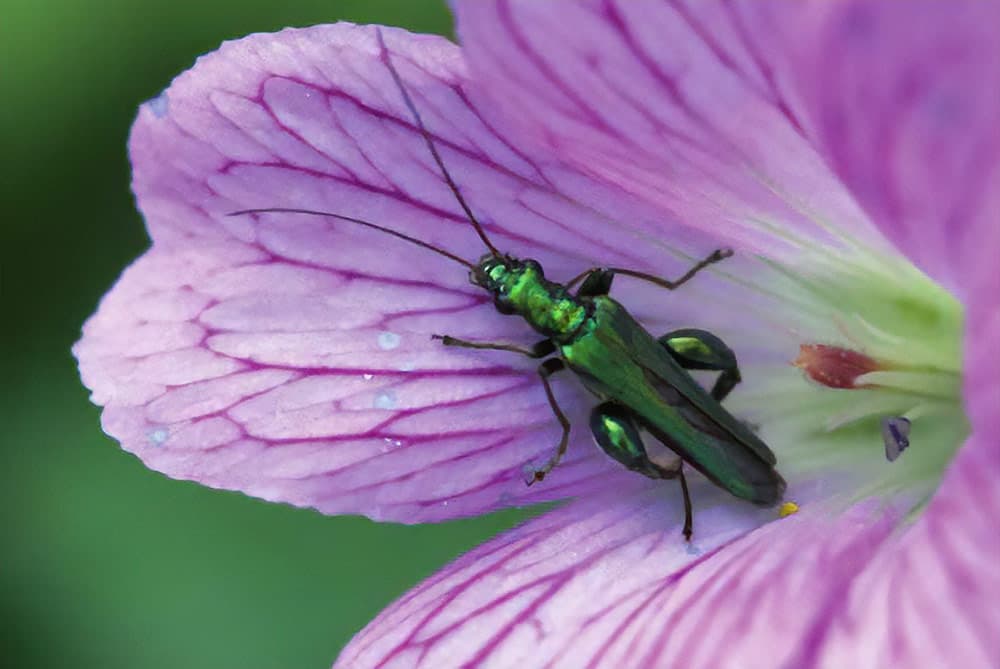
Extension tubes fit between the rear mount of the lens and the camera body to make the lens focus closer and therefore produce a much bigger image of a small subject.
This image of a thick-legged flower beetle was shot with an 18-200mm zoom lens and a 20mm extension tube added. This is a much cheaper alternative than buying a macro lens, but extension tubes are fiddlier to use in the field.
Also, with an extension tube fitted you lose the infinity end of your focusing range. Add more tubes and this becomes increasingly limited.
3. Add a Dioptre to Make a Lens Focus Closer
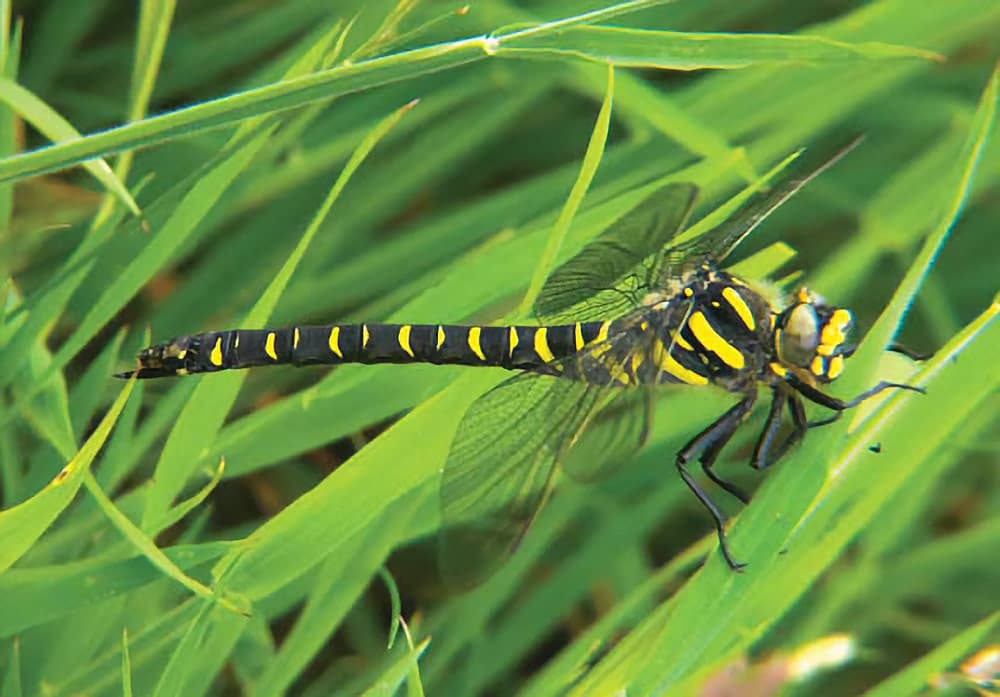
Close-up filters are single-element lenses that look like magnifying glasses.
These filters screw into the front element thread and can provide an inexpensive alternative to splashing out on a dedicated macro lens.
They come in a variety of strengths that are measured in dioptres. Close-up filters are often available in sets of +1, +2 or +4 dioptre magnification. Dioptres are also available to fit Cokin-style square filter systems.
These can be your only option if you’re shooting with a compact camera or ultra-zoom camera, and by adding a dioptre you can achieve real close-up macro photography shots.
The golden ringed dragonfly shown here was shot on a Panasonic Lumix FZ30 ultra-zoom camera with a +3 dioptre added to the front element.
One thing to note, is that these do add additional glass to your camera, which can have a negative effect on image quality.
4. Use Apertures to Control Depth of Field
To get the most out of the available depth of field, select a small aperture like f/16 or even f/22, although be aware of diffraction, particularly on smaller sensor cameras.
You will find that at half-life size the depth of field you can achieve at f/22 will be only around 15mm at best.
On the other hand, you may wish to go to the other extreme and show as little sharpness as possible by opening up to full aperture like f/2.8 or f/4.
One advantage of the latter option is that any out-of-focus highlights will show as circle-like bubbles that can look very attractive.
To extend the area in focus beyond this, you’ll need to look into focus-stacking, either in-camera (if your camera supports it), or using additional software. This process combines a number of shots taken at different focus points to give additional detail.
5. Blend Flash with Ambient
With more static subjects it can be fun to add a blip of flash just to liven up your macro photography.
In this composite shot of a sycamore leaf, both images were exposed for natural light; however, the image on the right was given a blip of off-camera fill-in flash and the shutter speed was increased by one stop in order to darken the background.
This has given a much more colourful image, which is particularly useful when shooting on grey cloudy days.
6. Use a ‘Third Hand’

A ‘third hand’ or ‘helping hand’ device is an essential macro photography accessory. It enables you to support or position subjects just where you want them. It can also facilitate endless possibilities for positioning backgrounds.
This can be particularly useful as it frees up your hands for other things, such as using a reflector to add or direct additional light onto the subject to fill in shadows or boost the colour.
7. Fine-tune Macro Pattern Compositions
Although we can crop things using software later, it is best to fine-tune composition in-camera at the time of shooting, as far as possible.
With close-up pattern details, ensure they fill the frame completely so that there are no gaps around the edges. Alternatively, you can show the entire pattern with space all around it.
These two shots of the same fungus illustrate how these opposite approaches look in practice.
8. Point of Focus
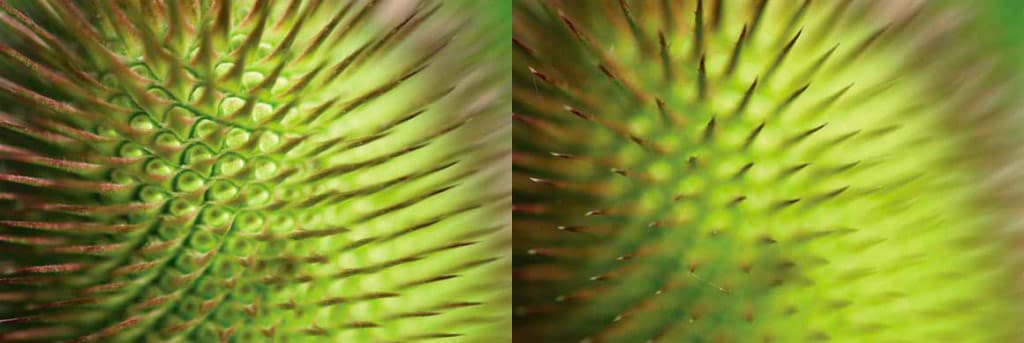
It is essential to consider the actual point of focus when working close-up with tiny subjects. You can dramatically change the appearance by choosing where you focus.
These two shots of the same teasle head were both shot at the same maximum aperture, but the point of focus was changed by a couple of millimetres to produce an entirely different effect.
9. Check the LCD screen
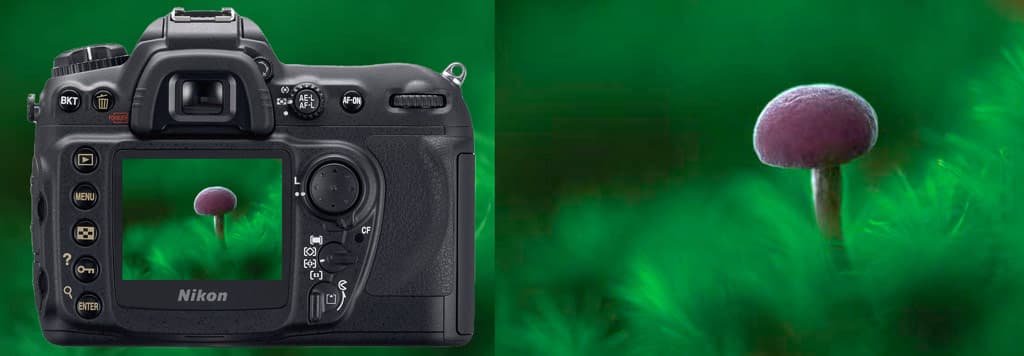
Use your rear LCD screen to ensure you have got the shot you want before moving on. Look carefully at the corners to make sure there are no intrusions.
Tidy up any unwanted debris in the scene and make sure that your composition concentrates on your subject as intended. It’s also wise to carry a spare battery, as constantly reviewing shots will drain power.
If your camera has a tilting screen, this can be a great help when shooting small low-down objects as you can tilt your screen up to give a better view, without having to crawl on the ground so much.
10. Macro Photography tips: Raindrops
After rainfall is an excellent time to search for macro photography subjects. The presence of droplets can have a spellbinding effect on an image.
Go in close to show how the raindrops act as miniature lenses, magnifying the veins in leaves.
11. Different Backgrounds
Add different coloured backgrounds to macro photography shots to change the look of the subject.
These four backgrounds were all natural subjects but shot deliberately out of focus. Grass was used, and tree foliage and a combination of bushes and sky.
They were printed to A3 on matt paper so there was less risk of reflection when placed behind the subject, especially if a mirror or flashgun was to be used to expose the image.
If you’re not shooting with your own background, it’s important to pay attention to what’s in the background of the image. A subtle change to your camera position can make a big difference to how your image looks.
12. Butterflies
With small but lively subjects like butterflies, it can be difficult getting close enough to them for frame-filling macro photography shots.
Try stalking them later in the day, just as they are about to settle down for the night, as they will be calmer and move less, or see if there’s a local butterfly house where photography is allowed so you can practice your shots.
See our complete guide on how to photography butterflies.
13. Have a look at inspirational macro photographs!
If you’re looking for more inspiration on taking amazing macro photos, have a look at some of the fantastic macro photos in our round-up of the Top 20 Best Macro and Close-up Photos! Here you’ll find a wide range of create ideas and different views of the smallest of creatures, and plant life. Whether you’re photographing mushrooms, small plant detail, or creepy crawlies, there is something for everyone here.
For more advice on shooting creepy-crawlies, have a read of our macro photography tips for shooting insects – or check out our main macro photography hub to learn even more.
14. Look around you for more macro subjects! (including Lego!)

We’ve covered lots of different subjects for macro photography, but if the weather is too cold and grey outside, or you just want to have some fun indoors, then look to small figures, figurines, and Lego for some inspiration! Why not recreate your favourite movie scene, or find the detail in the smallest of objects.
Read our guide to photographing miniatures, figurines and Lego!
15. Think about lighting options

As with all types of photography, light plays an essential role in how your photos will look. If you find that your macro photographs regularly lack pop, then the lack could be of light. There are a variety of ways to direct more light to your subjects, either using a simple reflector, or even a piece of A4 paper, to bounce it onto the subject. But if you want to add additional light, then have a look at the Adaptalux Studio Macro LED lighting kit.
Read our beginners how-to guide to macro photography for even more tips.
Dig in deeper to macro photography with our top macro flower photography tips and learn the key to revealing intricate details of tiny subjects with macro photography lighting tips.
Related reading:
- Focus stacking: How to achieve pin sharp macro shots
- Everyday objects as alternative macro subjects
- Top Minimal Macro Tips and Techniques
Follow AP on Facebook, Twitter, Instagram, YouTube and TikTok.

